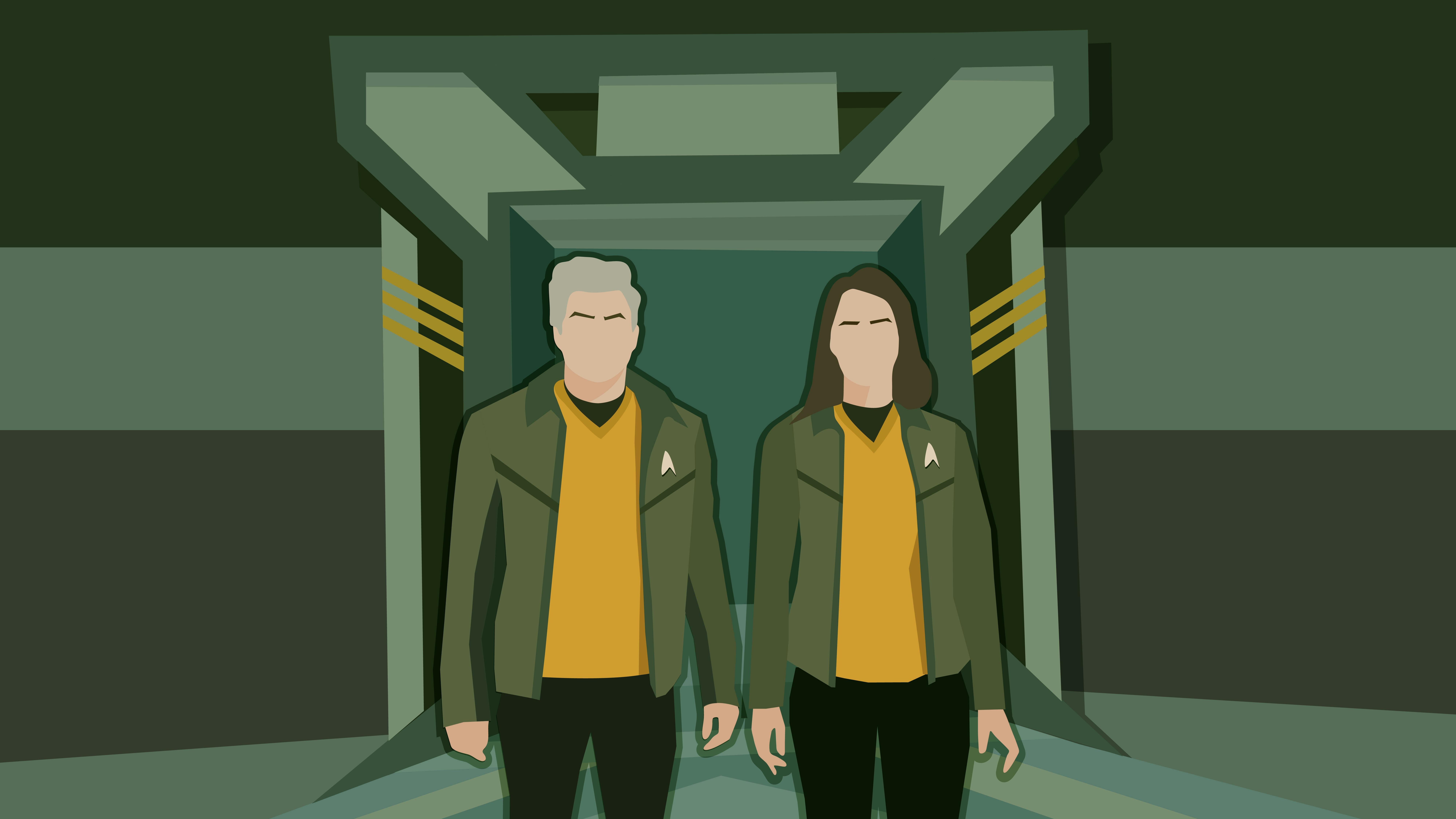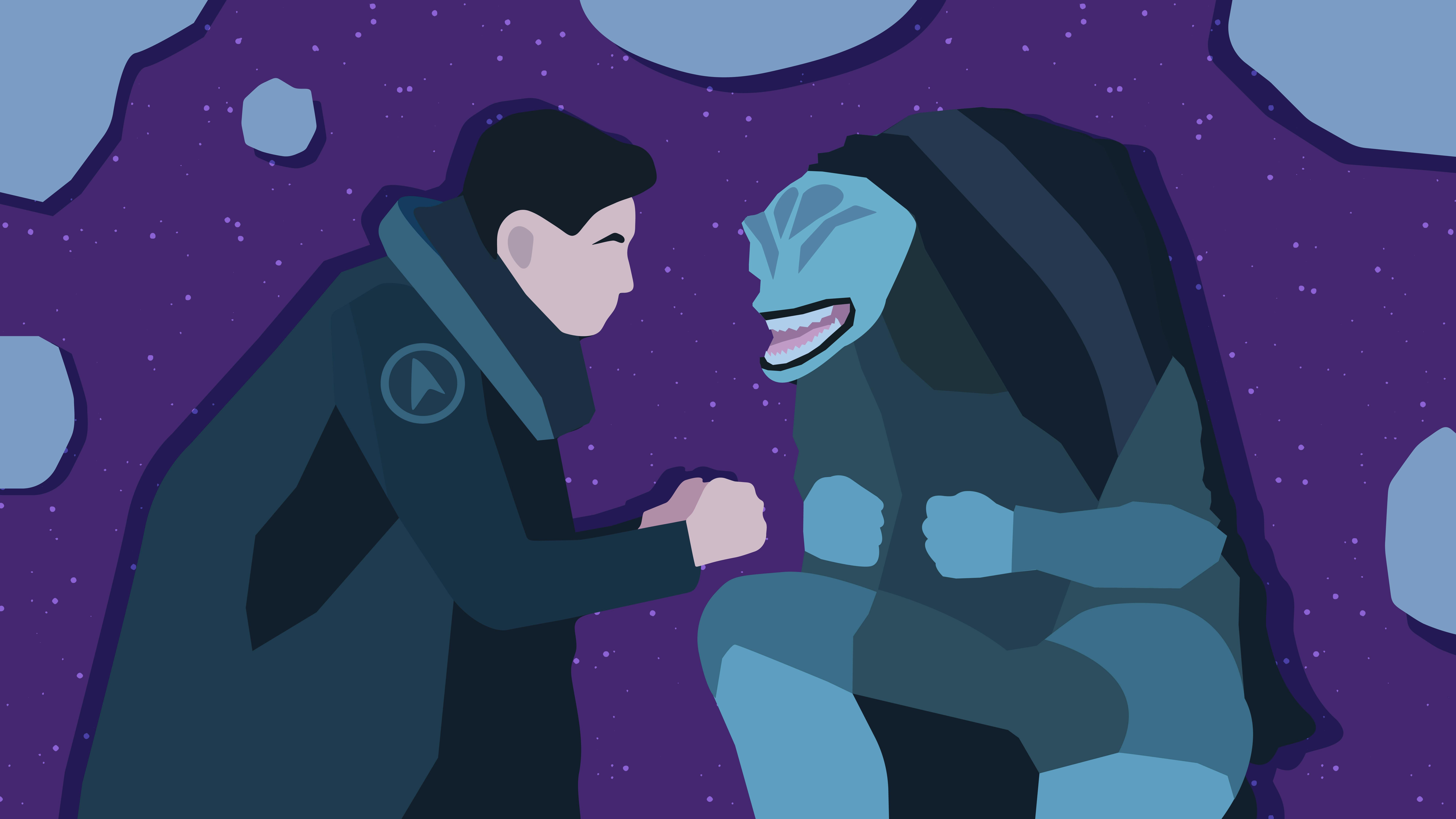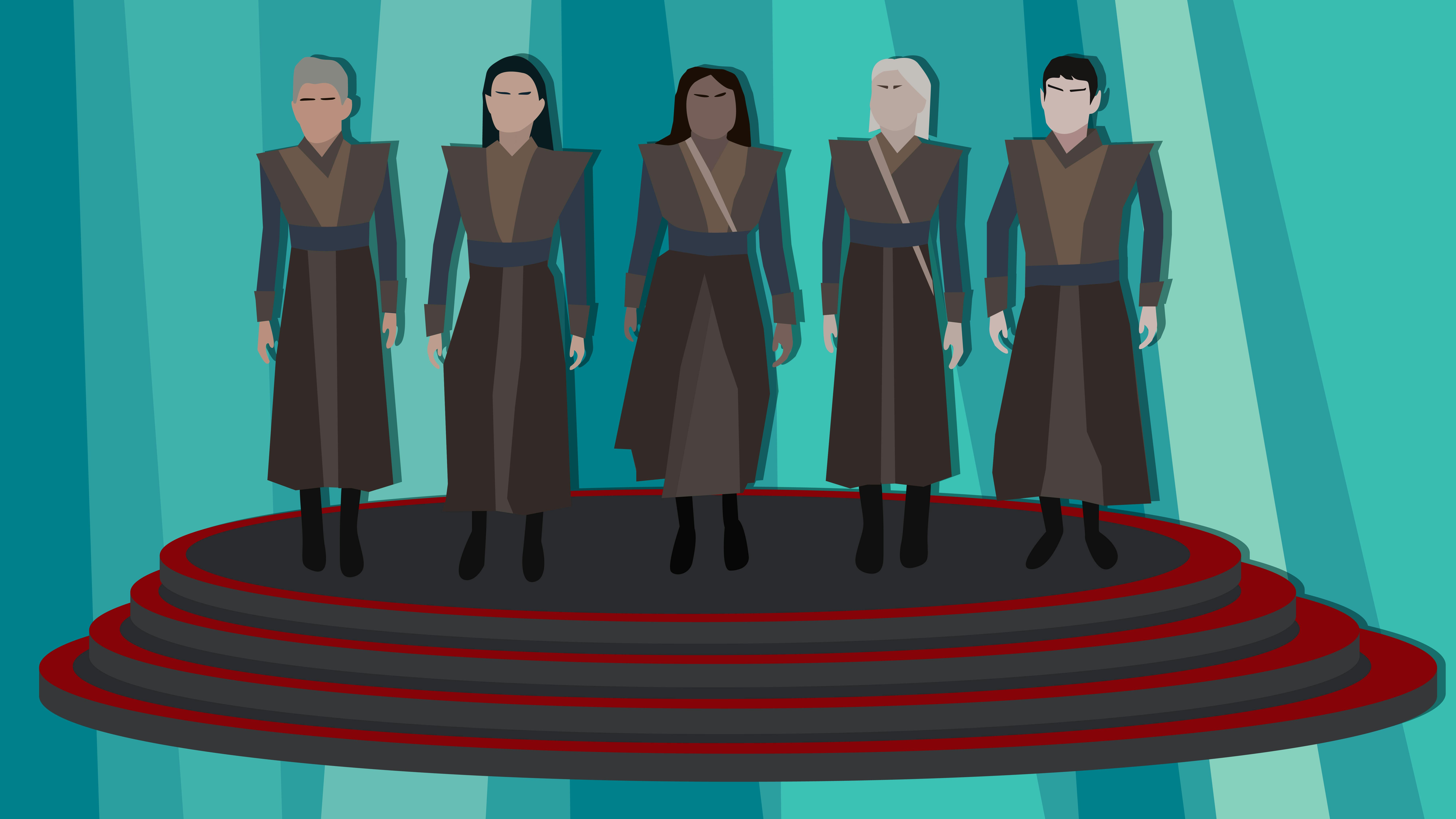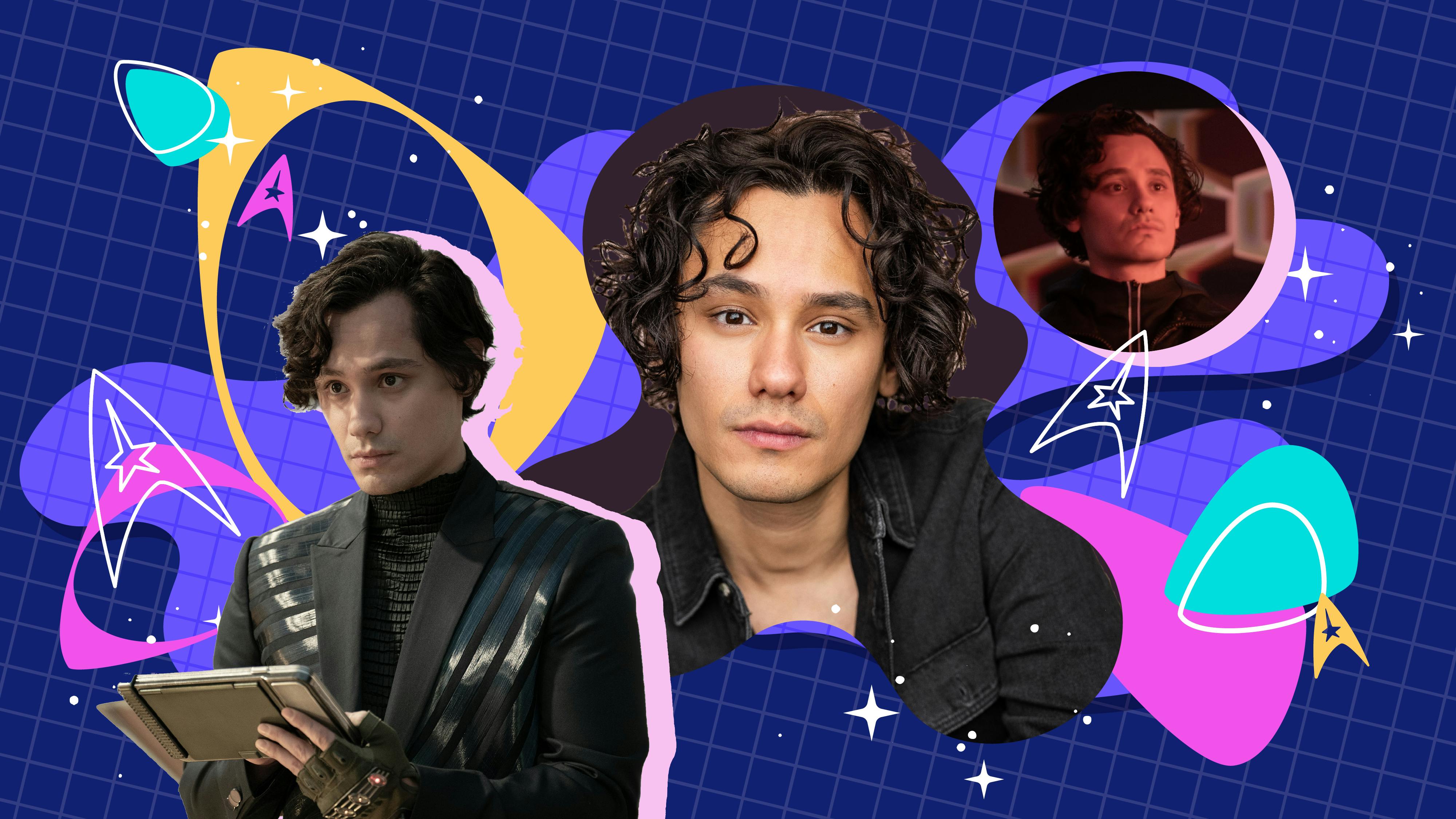Published May 23, 2025
Genesis of 'Unimatrix Zero'
For the episode's 25th anniversary, the story's creator gives insight on how the Voyager tale came to be.
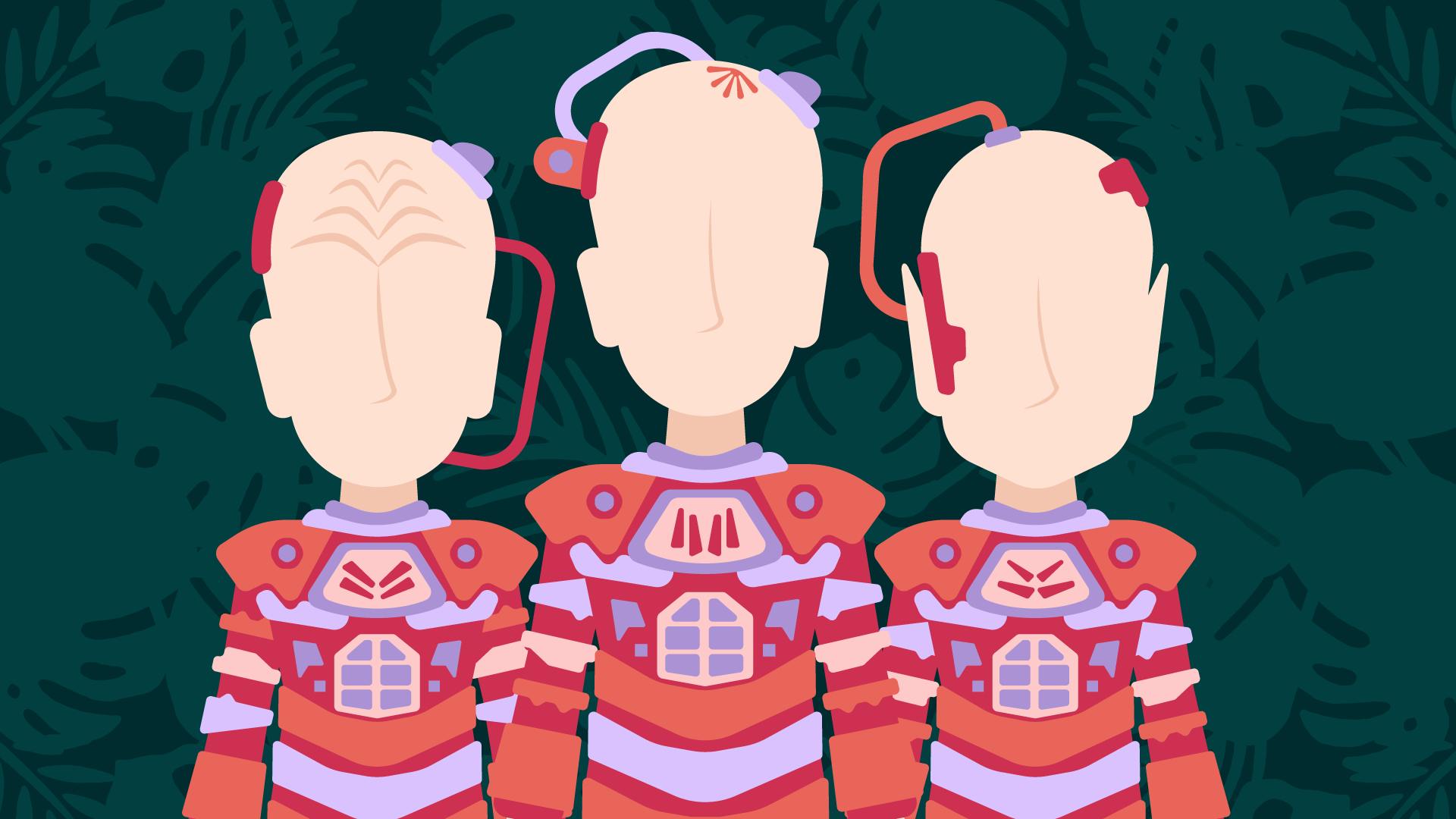
StarTrek.com
[Editor's Note] Back in the day, Star Trek fans who also happened to be aspiring writers were free to pitch ideas to the powers-that-be and writing staffs at , , , and . Most who tried, failed. Some had a kernel of an idea utilized and whipped into a teleplay by a staff writer, and received a story by credit for their contribution. And a few ended up writing their own teleplay or, in rare cases, were invited to join the writing staff. Mike Sussman lived the dream.
A lifelong Trek fan, he started as an intern, sold an idea, and ended up on the Voyager writing staff, working his way up to story editor. Sussman went on to write and co-produce Enterprise and, following its cancellation, wrote and produced for Threshold and Legend of the Seeker. These days, with his old Voyager writing partner, Ken Biller, he co-created, writes and produces the new TNT hit, Perception, which features LeVar Burton in a recurring role.
Catching up with Sussman recently, he mentioned a story he'd written for his own blog, a piece about what it was like for a fledgling writer to land a Star Trek credit. We loved the piece, and Sussman welcomed us to run it, with the provision that we make sure to say he wrote it 12 years ago. So, presented without a word changed, is Sussman's essay (published on July 6, 2000), "The Genesis of '.'" Sussman wrote it 12 years ago, starting with the following introduction.
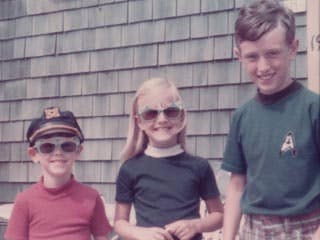
Mike Sussman
While "Unimatrix Zero" was based on a story I pitched, the original idea that eventually morphed into Star Trek: Voyager's Season 6 cliffhanger started as something quite different. As usual in TV, the fact the show happened at all has much to do with luck, timing, and the talent and commitment of many talented writers and producers.
There are more than a few books out there documenting how Star Trek is produced and directed. But there's little on the writer's experience. After all, it's pretty hard to get inside someone's head and see the gears turn, and Brannon Braga and Ken Biller are too busy writing the show to tell us how they came up with their last script. I apparently have way too much free time. Thus, this article.
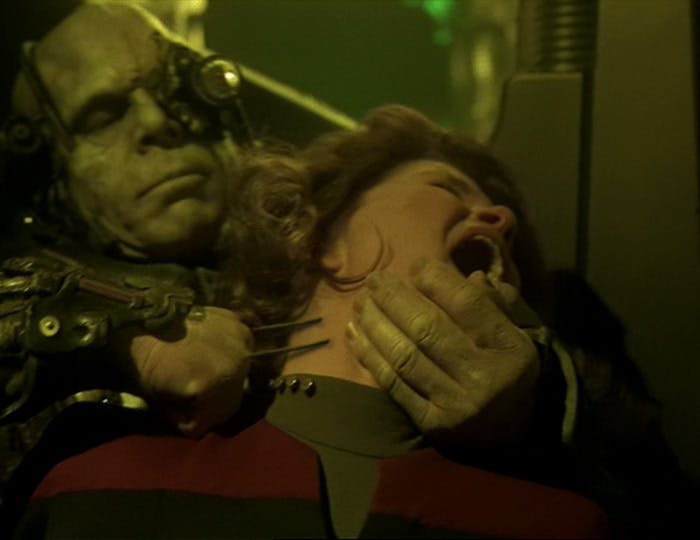
"Unimatrix Zero, Part I"
StarTrek.com
I landed in L.A. a few years ago, and after settling in an empty apartment off Melrose, I decided to grab the bull by the horns.
I'd been a sci-fi fan from way back, and had read enough to know the Star Trek producers had a fairly open-door policy toward new writers. So I dialed Paramount, got through to an assistant, and explained that I wanted to come in and pitch.
"Who's your agent?" Well, I didn't quite have one yet, just a small mountain of rejection letters. "No, sorry, you can't pitch," I was told.
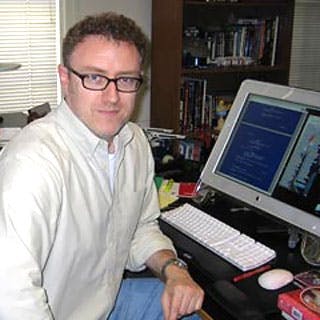
Mike Sussman
Flash forward about a year. I'm working on the Paramount lot as a news writer for a local TV station, located about 50 yards from the Star Trek offices. I figure if I hang on to this job long enough, and keep banging my head against the wall, sooner or later, the people over at Star Trek are going to notice me. Or take out a restraining order. The best part of my day job — every day dozens of real life stories cross my desk, some of which will spark ideas for future scripts, Star Trek and otherwise (for those of you struggling to find something to write about, you can't beat the newspaper).
Eventually, I managed to get the attention of a writer on the show. That led to an internship with the writing staff (easily the best six-week education in TV you could ever have) and the opportunity to pitch. At last.
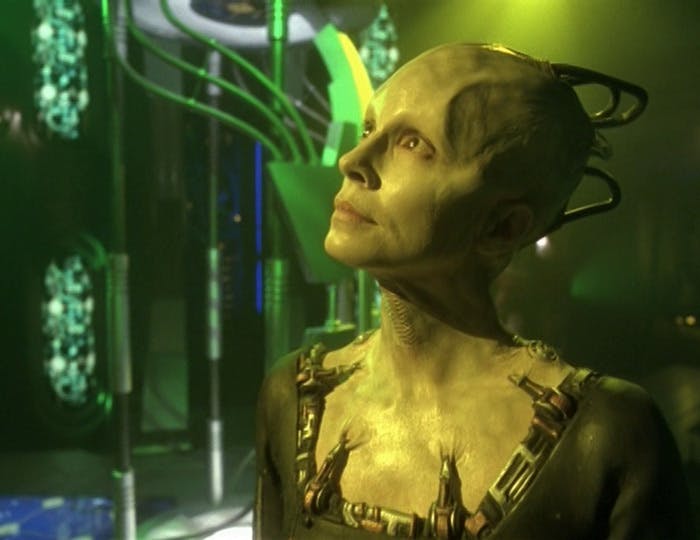
"Unimatrix Zero, Part I"
StarTrek.com
By Voyager's sixth season, I'd managed to sell a couple of ideas to the producers. My most recent was a story involving everyone's favorite villains, the Borg (this is, incidentally, not the story that became "Unimatrix Zero"). After a lot of sweat and heartache, this particular story document was placed on the back burner. It was a nice paycheck, but it was something of a letdown in the end. I wanted to sell a story that aired [Editor's Note: This story was eventually produced as Season 7's "," teleplay by Rob Doherty]. At this point, I was told the producers were so desperate for stories, they were combing through unsolicited spec scripts looking for ideas to buy. Here I was, with access to the top brains of the Star Trek franchise, without a notion in my head.
The Notion
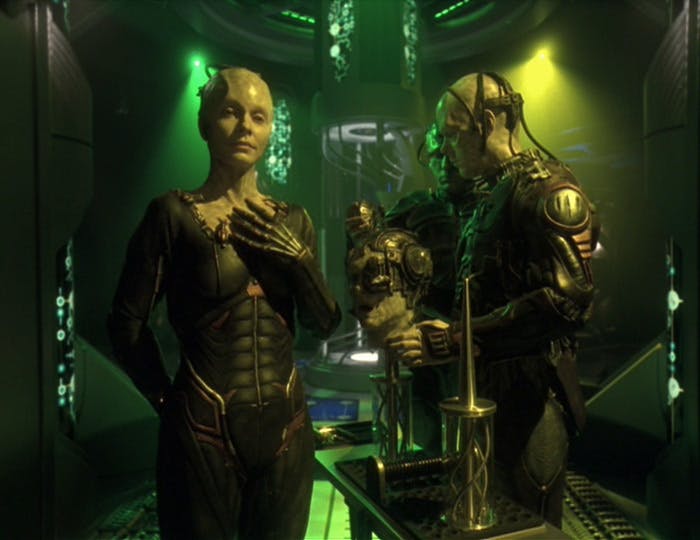
"Unimatrix Zero, Part I"
StarTrek.com
October 29, 1999 was the 30th anniversary of the internet, and there were dozens of articles marking the occasion. One morning, I was flipping through The New York Times when I came upon an article that quoted one of the founders of the internet. The article described his vision... what he saw as the dawning of a "galactic network."
A Galactic Network
This set off a firestorm of ideas. Of course! Star Trek had done a couple of things internet-related, but they hadn't yet done a show that grasped the full revolution implied by the net. The more I thought about it, the more it seemed the Trek universe was ready to be turned upside down by something like this, just as our world has. Trek’s idea of building a tin can and sending explorers off to the far reaches of the galaxy suddenly seemed an antiquated notion, something H.G. Wells dreamt up. Why not just go into a holodeck and jump on to the galactic net — you could meet a dozen alien races before lunchtime. Or think of the games you could play with species you never actually meet in person (there are certainly dangers inherent in that scenario). I didn't know exactly what I had yet, but I had something, and with a meeting coming up, I whipped the idea into shape. What follows is my pitch to the executive producers.
Star Trek: Voyager
"Connections" 11/2/99
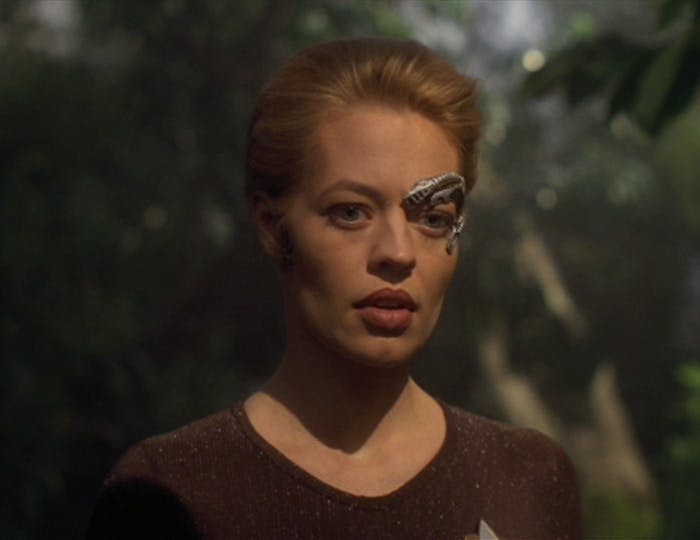
"Unimatrix Zero, Part I"
StarTrek.com
Seven is working in Astrometrics when she discovers a transwarp signal originating from outside our galaxy. She finds it is a link to a sort of "Cosmic Internet" that connects thousands, perhaps even millions of worlds. If Seven can tap into it, she may single-handedly revolutionize inter-species communication.
After much hard work, we decode the signal and manage to build a Transwarp Node to plug Voyager into this giant web. Without warning, the Node unexpectedly seizes control of the holodeck — transforming it into a sort of intergalactic chat room. Janeway sends in an Away Team, and in an incredible sequence, the crew makes "virtual" First Contact with a half-dozen races from a distant galaxy... aliens we could otherwise never hope to meet in our lifetime.
It becomes clear to Janeway this web could be as revolutionary as warp drive. Strangely, the captain finds herself despondent — wondering if in the future, the Federation will make all First Contacts this way. There may be no need someday for starships... or starship captains. Janeway starts to feel past her prime... a relic made obsolete by new technology.
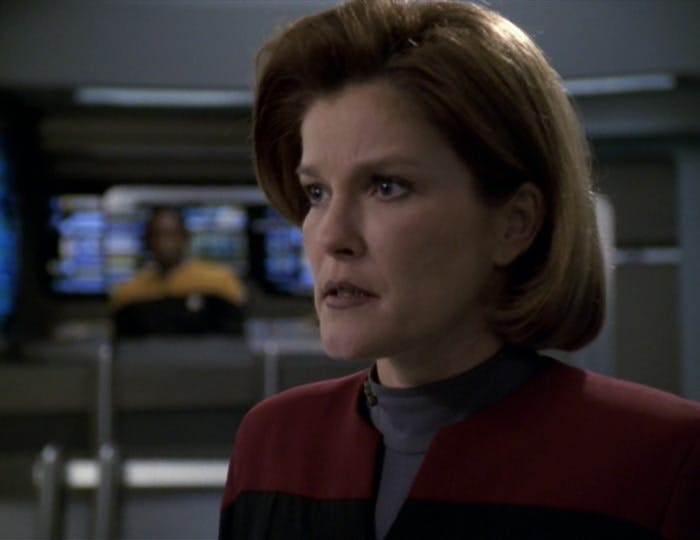
"Unimatrix Zero, Part I'
StarTrek.com
Seven begins to bond with one of the Virtual Aliens, a man who, like her, is comforted by the multitude of voices on the network — it reminds her of the Collective. Despite the millions of light-years between them, Seven's relationship with this alien begins to take on romantic overtones.
The Node continues to draw ever increasing resources from Voyager, too fast for us to sustain. Seven comes up with a desperate plan to keep it operating — but it will require cannibalizing the warp core, stranding us in the Delta Quadrant indefinitely. Seven is convinced the sacrifice will be worth it — her alien friend assures her his people have the knowledge to repair the core. But Janeway isn't so trusting, and the captain is presented with a difficult choice.
That's when we discover a fatal flaw — the web we've tapped into has a temporal displacement. We've been talking to aliens who haven't been born yet. The Node must be shut down immediately — all knowledge of it purged from Voyager's computer.
For Seven, it is a crushing turn of events. She goes to the holodeck one last time to say goodbye — her heart breaking with the knowledge the man she has developed feelings for won't exist for generations to come.
The story had some problems. For one thing, the ending was too similar to DS9's "." And the idea of Janeway "growing despondent" over a new technology that might take away her job didn't go over well; neither did the notion of a romance for Seven of Nine (at first). The story had a decent setup, but petered out too quickly. Still, there was something there... the idea of going into the holodeck and virtually transporting to another world seemed intriguing. They weren't ready to buy it yet, so I went home to think about it some more before our next meeting.
After a few days, I came up with two variations on the story. One of them, I was sure, had to sell. In broad strokes, these were the two ideas...
1) "Virtual Away Mission"
After linking with the network and meeting these aliens on the holodeck, we utilize the transporter to send Seven's consciousness on a "virtual away mission" to a distant planet. Once there, there's an accident, and Seven's transporter pattern is apparently lost, trapping her forever in this virtual realm. As she tries to get back to Voyager, Seven discovers these aliens we've met are really avatars — digital shadows of people who logged into the network long ago. Seven starts to question her own reality and suspects that she, too, may only be a digital echo of the real Seven of Nine.
2) "Sim Voyager"
The aliens we meet on the holodeck believe that Voyager and its crew are part of a simulation, and they launch a "virtual war" on us, sending commandos through the holodeck and taking over the ship. It's now up to Janeway to go into the holodeck and take the attack to the aliens, hoping to prove to them that we are real, this war is real, and that we're going to hurt them for real if they don't stop this cyber assault.
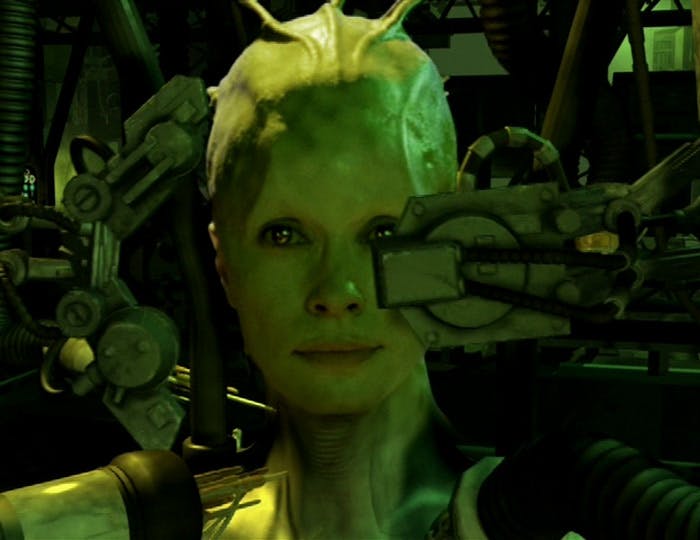
"Unimatrix Zero, Part I'
StarTrek.com
I was feeling pretty confident that one of these would sell (as you may have guessed, neither did). I set up the meeting, and then the fear hit me: what if neither sold? I had to come up with at least one more idea. With time running out, I put on my thinking cap (a process which involves a lot of staring out the window). After a fashion, I remembered my earlier Borg story (the one that had sold but hadn't been made) and a thought flitted through my brain...
"They haven't really done anything about the Borg and cyberspace."
Hmmm.
I liked it, but I wasn't in love with it. For one thing, I was probably a little gun-shy after the last Borg pitch I sold got hung up in the story stage. And this was a pretty big story, with lots of repercussions for one of the franchise's big villains. What if they didn't want to go this way?
It didn't really matter, I figured: one of the other ideas was bound to sell. This was my "in case of emergency, break glass" pitch. I'm sure I won't even get to it.
The Meeting
I arrive at the Star Trek offices. The entire Voyager writing staff is packed into the showrunner’s office. "Deer in the headlights" would be a fitting description. I swallow hard, and begin...
The first idea, the "virtual away mission," didn't go over well. Seemed too confusing... is Seven on the holodeck or the other planet? What's with the transporter? It wasn't elegant. Didn't work.
"What else have you got?"
I pitch the "Sim Voyager" story. This one's going over a little better, until it's pointed out that it bears a strong resemblance to "," a show where holographic aliens invaded Paris' Captain Proton program (a great show, must be why I subconsciously ripped it off).
People are looking a little bored. They're busy, with shows to write, production meetings... meanwhile, I've got my day job waiting for me. My shirt starts sticking to my back.
"Anything else?"
"Yeah, I've got one other idea. It's a Borg story," I add quietly, as if I'm hoping they won't notice. So I pitch it...
Here it should be noted that William Goldman's pronouncement that in Hollywood "Nobody knows anything" is as true as it ever was. The story they bought, the idea that sold, was the one I had the least faith in.
But I had a sale. The staff seemed pretty enthused about it... and already, they were coming up with really cool notions that hadn't occurred to me (someone tossed out the idea that the Drones might only be able to enter the cyberspace realm while regenerating, a neat idea which appears in the finished show).
At the end of the meeting, one of the producers said something prophetic, "Make a great two-parter."
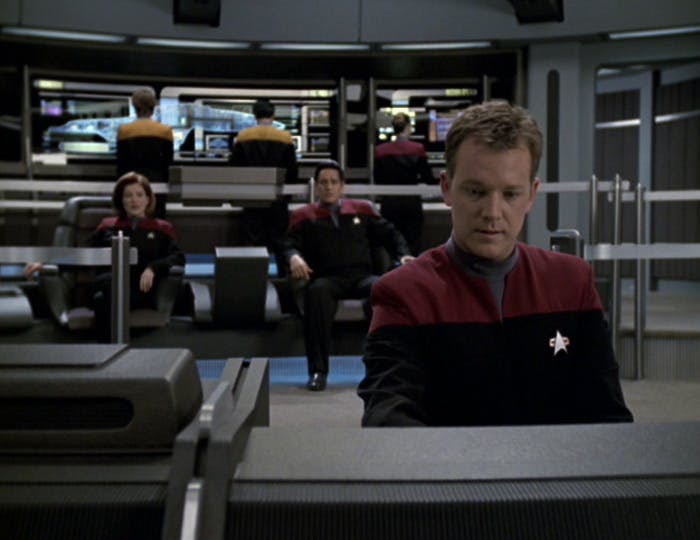
"Unimatrix Zero, Part I"
StarTrek.com
In the coming weeks and months, the story went through several permutations... becoming first a Tom Paris story (seemed to make sense at the time — he's the guy monopolizing the holodeck). Eventually, the holodeck angle was eliminated — I think it works much better without it. By the time it became a Seven of Nine story again, it was out of my hands. The check was cashed, credit cards paid off, and I was once again on the outside looking in, nose pressed against the glass, wondering what would happen next and would I be able to finagle a visit to the set.
There is of course, much more to this, but I suspect even the die-hard Trekkers have nodded off from boredom at this point. Still, it was pretty cool getting that phone call from the producers earlier this year, telling me they were turning my little idea into a two-part cliffhanger and what did I think of that?
"Sure, fine with me."

